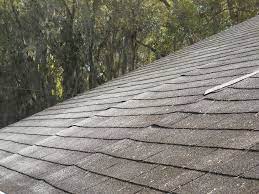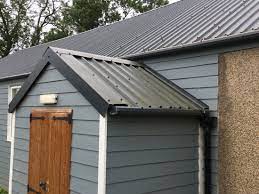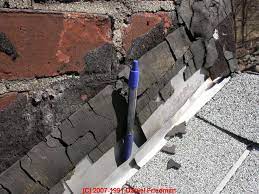The Saggy Roof
 A sagging roof is actually a sign of an old-aged roof. What if the roof has not reached its 10 years life span? Premature sagging is caused by other serious factors which harm your roof material. It can be that the roof was built by ineligible contractor.There is also a possibility that the materials used are not complement with each other.
A sagging roof is actually a sign of an old-aged roof. What if the roof has not reached its 10 years life span? Premature sagging is caused by other serious factors which harm your roof material. It can be that the roof was built by ineligible contractor.There is also a possibility that the materials used are not complement with each other.
They can be weakening the roof’s structural foundation. Your roofing system protects you and your loved ones from the outside elements. As such, you want to make sure that your roof is in top condition in order to operate with maximum efficiency.
However, there are many problems that can affect roofs, and one of them is roof sagging. A sagging roof can take many forms. Each of these forms indicate its own cause. A ridge that sags in the middle may indicate undersized rafters or a lack of internal bracing. Undersized rafters can also sag all over the side or the entire plane of the roof.
Too thin siding
 If your roof sags between rafters or trusses, it means the siding is too thin for the size of the roof and should be replaced immediately. A small sag doesn’t necessarily mean your roof is in imminent danger of collapsing. It does mean though that you need to act quickly to save the structure.
If your roof sags between rafters or trusses, it means the siding is too thin for the size of the roof and should be replaced immediately. A small sag doesn’t necessarily mean your roof is in imminent danger of collapsing. It does mean though that you need to act quickly to save the structure.
Often a sagging roof can be repaired and strengthened. To preserve your roof, it is worth calling in a professional to determine the exact cause of the sag and take the necessary steps to remedy it. To correct the sagging itself, angular braces can be installed to prop up the rafters.
Another approach is to give the walls more support by installing chains attached to the wall plates and tied in the middle with a turnbuckle. Depending on the degree of sag, your contractor may need to use jack poles to raise the roof.
Your Flashing of Roof Is Cracked
 What the flashing looks like? Flashings are thin pieces of metal that are installed under the shingles and over the joints of your roof to provide a water-resistant barrier, which can be concealed or exposed. If they are exposed they will appear as long sets of leaves and if they are hidden they are going to have a rubberized coating on top.
What the flashing looks like? Flashings are thin pieces of metal that are installed under the shingles and over the joints of your roof to provide a water-resistant barrier, which can be concealed or exposed. If they are exposed they will appear as long sets of leaves and if they are hidden they are going to have a rubberized coating on top.
Broken flashing will show large cracks. Why does it happen? Roofers Bournemouth often use tar to seal flashing which can corrode over time. Whenever you notice that your flashing is left exposed, different elements such as wind and rain may be the reason for its cracking.
Flashing around your roof helps to keep those protruding or inconvenient areas sealed and protected from water damage or leaks. It is installed on the areas around your chimney, skylights, ventilation pipes or heating and cooling systems located on the roof. It must be properly attached and secure, otherwise you will run into issues from the start.
Joints in the roof open
 When the flashing is damaged, the joints that seal your roof and any protruding structures open and can cause a variety of problems. If you notice any damaged turn signals, call experts like the ones initially at today. Once you find the source of the leak, lift the nails to secure the old flashing.
When the flashing is damaged, the joints that seal your roof and any protruding structures open and can cause a variety of problems. If you notice any damaged turn signals, call experts like the ones initially at today. Once you find the source of the leak, lift the nails to secure the old flashing.
Lift all the shingles and remove the cracked segment. Gently put a series of replacement flashings in its place, secure the new flashing in the same pattern as your old room using roofing nails. Then apply a coat of roofing sealer to the nail heads.
Regularly check the flashings around your chimney and vents to make sure that any cracks do not let in moisture. So you always have to rectify this problem properly to avoid bigger damage to your property.
